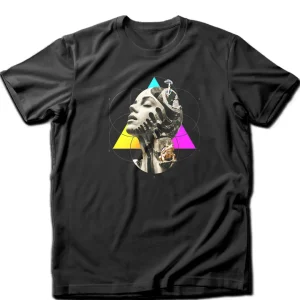Introduction
Magic mushrooms, also known as psilocybin mushrooms, have long been celebrated for their ability to induce profound psychedelic experiences. Recently, these fungi have been investigated for their potential therapeutic benefits beyond their mind-altering effects. One particularly intriguing area of research is the potential of psilocybin to improve color vision in individuals with color vision deficiency, commonly referred to as color blindness. This article delves into the latest study that suggests magic mushrooms might help enhance color vision. We’ll explore the findings, the science behind psilocybin’s effects on the brain, and the broader implications for those with color vision deficiencies.
Understanding Color Blindness
Types and Causes
Color blindness, or color vision deficiency, is usually an inherited condition caused by anomalies in the cones of the retina—the photoreceptors responsible for color vision. The most common types include:
- Red-Green Color Blindness (Red-Green CVD): The most prevalent form, affecting about 8% of men and 0.5% of women of Northern European descent. This type can be further divided into deuteranopia (green blindness) and protanopia (red blindness).
- Blue-Yellow Color Blindness: A rarer form that affects the ability to distinguish between blue and green, and yellow and red.
- Complete Color Blindness: A rare condition where individuals see no color at all and perceive the world in shades of gray.
The Impact of Color Blindness
Color blindness can significantly affect daily life, impacting activities such as reading traffic lights, selecting ripe fruits, choosing matching clothes, and pursuing certain careers that require precise color discrimination, such as graphic design, piloting, and some medical fields.
The Study on Psilocybin and Color Blindness
Objectives and Methodology
The study aimed to investigate whether psilocybin, the psychoactive compound in magic mushrooms, could improve color vision in individuals with color vision deficiencies. Researchers recruited participants with diagnosed color blindness and administered controlled doses of psilocybin in a supervised setting.
- Participants: Adults aged 18-65 with diagnosed color blindness.
- Methods: Double-blind, placebo-controlled trials with varying doses of psilocybin.
- Duration: Participants were monitored over several weeks to assess changes in color vision and overall well-being.
Key Findings
The study’s findings were promising:
- Improved Color Perception: Many participants reported an enhanced ability to distinguish colors, particularly in the red-green spectrum.
- Sustained Effects: The improvements in color vision persisted for weeks after the psilocybin session.
- Minimal Adverse Effects: Participants experienced mild, transient adverse effects such as nausea and dizziness.
How Psilocybin Works
Mechanism of Action
Psilocybin is a classic psychedelic that primarily affects the brain’s serotonin receptors, particularly the 5-HT2A receptor. This interaction leads to various changes in perception, mood, and cognition. The study suggests that psilocybin’s ability to enhance neuroplasticity—the brain’s ability to reorganize and form new neural connections—may play a crucial role in improving color vision.
Neuroplasticity and Vision
Neuroplasticity allows the brain to adapt and compensate for deficiencies. In the case of color blindness, psilocybin may help the brain develop new pathways or enhance existing ones, enabling better color discrimination.
Broader Implications for Treatment
Potential for Other Visual Disorders
The study’s findings open the door for exploring psilocybin’s potential in treating other visual disorders, such as:
- Amblyopia (Lazy Eye): Enhancing neural connections between the eyes and the brain.
- Age-Related Macular Degeneration: Possibly slowing the progression of this degenerative condition.
Expanding Therapeutic Applications
Beyond visual disorders, the implications of psilocybin’s neuroplastic effects are vast. Current research is exploring its use in treating:
- Depressive Disorders: Including treatment-resistant depression.
- Anxiety Disorders: Particularly in patients with terminal illness.
- Post-Traumatic Stress Disorder (PTSD): Reducing the impact of traumatic memories.
Ethical and Legal Considerations
Legal Status of Psilocybin
The legal status of psilocybin varies globally. In some places, it is decriminalized or approved for medical use, while in others, it remains illegal. Legal barriers can impede research and access to potential treatments.
Ethical Use and Accessibility
Ensuring ethical use involves:
- Informed Consent: Participants must be fully aware of the potential risks and benefits.
- Cultural Sensitivity: Respecting traditional uses of psilocybin by indigenous cultures.
- Equitable Access: Making treatments available to all, regardless of socioeconomic status.
Future Directions and Research
Ongoing and Future Studies
The promising results of this study warrant further research. Future studies should focus on:
- Long-Term Effects: Understanding the duration and sustainability of improvements in color vision.
- Optimal Dosage: Determining the most effective and safe doses for different individuals.
- Mechanisms: Further elucidating how psilocybin induces neuroplastic changes specific to color vision.
Broader Implications
The potential of psilocybin to improve color vision suggests broader applications for enhancing sensory perception and cognitive function. Future research could explore its effects on:
- Auditory Perception: E


